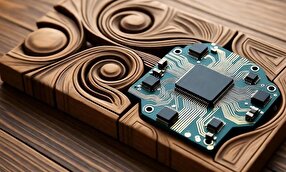AI Cracks Cosmic Mystery, Revealing Hidden Bubbles in Milky Way

Using deep learning models trained on space telescope data, they identified bubble-like formations linked to star births and supernova explosions. These so-called Spitzer bubbles hold key insights into the evolution of galaxies, shedding light on the dynamic and explosive nature of stellar life cycles, the Publications of the Astronomical Society of Japan reported.
To explore the farthest reaches of our galaxy and uncover the secrets of star formation, a team of Japanese researchers has developed a deep learning model. Led by Osaka Metropolitan University, the team used artificial intelligence to analyze vast amounts of data from space telescopes. Their efforts revealed bubble-like structures that had been previously overlooked in astronomical databases.
Like other galaxies, the Milky Way contains these bubble-like formations, which primarily emerge during the birth and activity of massive stars. Known as Spitzer bubbles, these structures provide valuable insights into the processes that shape galaxies and fuel star formation.
Graduate student Shimpei Nishimoto and Professor Toshikazu Onishi, along with researchers from institutions across Japan, created an AI-powered model to detect these bubbles more efficiently. By analyzing images from the Spitzer Space Telescope and the James Webb Space Telescope, their model accurately identified Spitzer bubbles as well as shell-like formations believed to result from supernova explosions.
“Our results show it is possible to conduct detailed investigations not only of star formation, but also of the effects of explosive events within galaxies,” stated graduate student Nishimoto.
Professor Onishi added, “In the future, we hope that advancements in AI technology will accelerate the elucidation of the mechanisms of galaxy evolution and star formation.”
4155/v





















